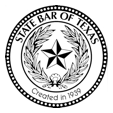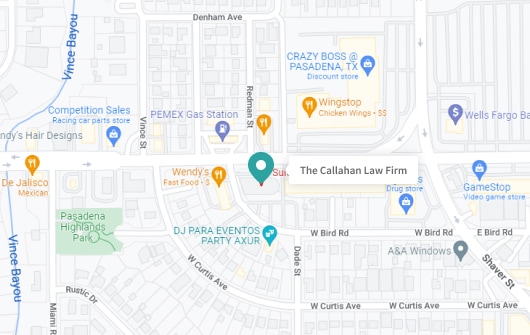Traumatic Brain Injuries: Causes, Symptoms, and Treatment

Traumatic brain injuries can be serious, and sometimes deadly. Data from the CDC states that in 2019, approximately 223,135 people were hospitalized due to traumatic brain injuries, and a reported 64,000 people suffered TBI-related deaths nationwide in 2020 – about 176 people a day. In the state of Texas alone, more than 2,611 people suffered fatal head injuries in 2022.
What are the Symptoms of a Head Injury?
A head injury can result in several symptoms, depending on the severity of the injury. Some of the symptoms of a head injury can include:
- headaches
- dizziness
- nausea or vomiting
- loss of motor skills
- confusion
- balance issues
- fatigue and drowsiness
- noise and light sensitivity
- mood swings
- loss of consciousness
- seizures
What Should I Do if I Suffered a Head Injury?
It is essential for anyone who has suffered a head injury to see a doctor in hopes of ruling out life-threatening injuries. This is because sometimes, symptoms do not show up until a few days after the injury. A doctor can examine the injury and run tests to determine how severe the injury is right away.
How Do Doctors Diagnose a Brain Injury?
Following a head injury, doctors will ask about how the injury occurred and examine your head physically for bruises, bleeding, and swelling. Additionally, there are several tests the doctors may conduct to determine the severity of a head injury.
GLASGOW COMA SCALE:
The Glasgow Coma Scale is a test that doctors use to determine consciousness levels in a person following a traumatic brain or head injury to initially gauge how serious the injury may be.
The test consists of several components: eye-opening, verbal response, and motor response. Eye-opening is rated on a scale from 1 (none) to 4 (spontaneous), the verbal response is rated on a scale from 1 (none) to 5 (oriented), and motor response is rated on a scale from 1 (none) to 6 (obeys command). Following the ratings, the score is added up.
The final GCS score is the sum of the ratings; the lower the score, the more severe the brain injury likely is. Generally, a score of 13-15 signifies a mild brain injury, a score of 9-12 is classified as a moderate brain injury, and scores of 8 or less are considered severe brain injuries. That said, some factors can limit the efficacy of the Glasgow Coma Scale. These include drug and alcohol use, shock, and low blood oxygen levels.
IMAGING TESTS:
In some cases, doctors will have the injured person undergo imaging tests to determine the severity of the injury and provide further guidance on treatment options. For example, CT or computed tomography scans are used to detect skull fractures, brain injuries, brain bleeds, and swelling. MRIs, or Magnetic Resonance Imaging, help diagnose brain injuries that may not appear on a CT scan.
What is a Concussion?
A concussion is a type of TBI that occurs when the brain moves rapidly within the skull, usually caused by either a blow or jolt to the head or body. The force of the impact can make the brain bounce or twist within the skull, damaging brain cells and even causing chemical changes.
Generally, scans cannot indicate whether or not someone has experienced a concussion. To determine whether or not someone is concussed, a doctor will test a patient’s speech, balance, and memory, check their head, eyes, ears, and neck, and look for concussion symptoms, such as persistent headaches, dizziness, blurred vision, nausea, vomiting, uneven pupil dilation, ringing of the ears, confusion, agitation, restlessness, convulsions, slurred speech, decreased coordination, memory issues, light and noise sensitivity, and loss of consciousness.
Different Types of Traumatic Brain Injury
Traumatic brain injury refers to damage to the brain caused by an external force, but there are different types of traumatic brain injuries based on the nature and extent of the injury. Here are some common types of TBI:
- Concussion: This, as we have seen, is categorized as a mild form of TBI and is the most common type.
- Contusion: A contusion is a bruise on the brain that occurs when the brain tissue is damaged at the site of impact, often caused by a direct blow to the head. Contusions can result in bleeding, swelling, and localized damage to the brain.
- Coup-contrecoup injury: This type of injury occurs when the force applied to the head is so strong that it causes the brain to move within the skull, resulting in two areas of damage. The initial impact (coup) occurs at the site of the blow, and the secondary impact (contrecoup) occurs on the opposite side of the brain.
- Diffuse Axonal Injury (DAI): DAI is a severe form of TBI that occurs when the brain rapidly shifts or rotates inside the skull, causing widespread damage to the brain’s nerve fibers (axons). This type of injury commonly results from high-speed accidents, such as motor vehicle accidents or severe falls. DAI can lead to coma, cognitive impairments, and long-term disabilities.
- Penetrating injury: Penetrating injuries occur when an object penetrates the skull and enters the brain tissue. These injuries can result from gunshot wounds, stabbings, or other sharp objects. The severity of the injury depends on the location and extent of the penetration.
It’s important to know that traumatic brain injuries can vary widely regarding symptoms, severity, and long-term effects. If you suspect a TBI, seeking medical attention immediately for a proper diagnosis and appropriate treatment is essential.
What are the complications of a traumatic brain injury?
The severity and type of complications associated with TBIs vary depending on the extent and location of the brain injury. Common complications include the following:
- Cognitive impairment: TBIs can result in difficulties with thinking, memory, attention, and problem-solving
- Communication and language problems
- Motor deficits: Muscle weakness, coordination problems, or difficulties with balance and motor control
- Sensory changes to vision, hearing, or touch sensitivity
- Emotional and behavioral issues such as mood swings, irritability, or depression
- Sleep disorders
- Seizures
Research also suggests that individuals who have experienced a severe TBI may have an increased risk of developing neurodegenerative disorders later in life, such as Alzheimer’s disease or Parkinson’s disease.
Each traumatic brain injury case is unique, and the specific complications and treatment options should be discussed with medical professionals specializing in brain injury.
How are Brain Injuries Treated?
Brain injuries are treated based on the severity of the injury. For milder injuries, there are times when treatment is not required. People with a mild classification of injury can be advised to rest, and limit both physical and cognitive activity. They may also be prescribed over-the-counter pain medication for headaches.
Sometimes, in serious cases, surgery is required. Doctors can perform emergency surgery to repair skull fractures, cease brain bleeds, remove hematomas (blood clots), or open the skull to drain cerebrospinal fluid to relieve pressure in the brain.
In severe cases, brain injury patients may require rehabilitation. Depending on the nature of the injury, the patient may need to relearn how to walk, talk, or perform certain activities. They may work with an occupational therapist, physical therapist, speech pathologist, neurologist, or another medical professional to regain their abilities.
What Should I Do if I’ve Had a Brain Injury?
If you or a loved one has suffered a brain or a head injury, seek immediate medical attention. Then, call The Callahan Law Firm to speak with one of our Houston Traumatic Brain Injury Lawyers. We have been successfully representing injured people and their families for over 25 years, and we will fight for you.
Call us at 713-224-9000, or fill out our contact form here.

Michael S Callahan is an attorney and founder of The Callahan Law Firm. He focuses his practice on representing individuals and families in personal injury cases involving motor vehicle and truck accidents, workplace accidents and defective products. With over 25 years of experience, he is dedicated to fighting on behalf of people whose lives have been forever altered by the negligence and carelessness of corporations and individuals. Originally trained as a mechanical engineer, Michael has been practicing law and fighting for justice for those who need it most since 1994. He is board-certified in Personal Injury Trial Law by the Texas Board of Legal Specialization and a member of various esteemed legal associations. Outside of work, Michael enjoys spending quality time with his family, outdoor activities, and continually striving to improve as a trial lawyer and human being.











